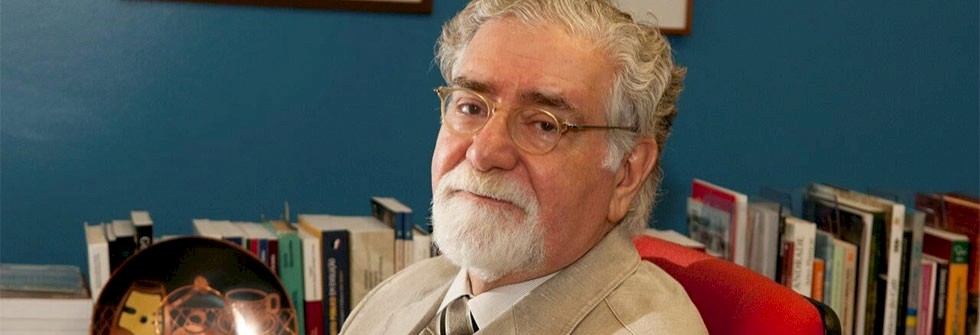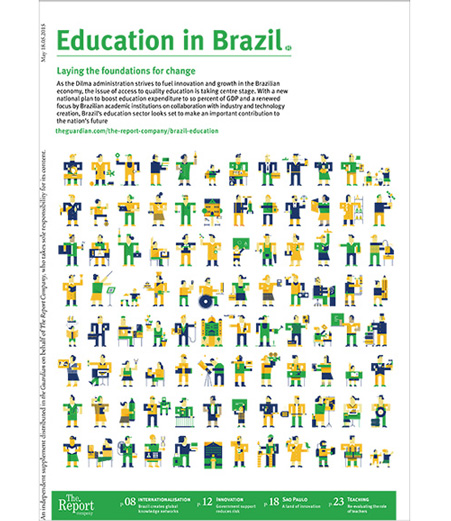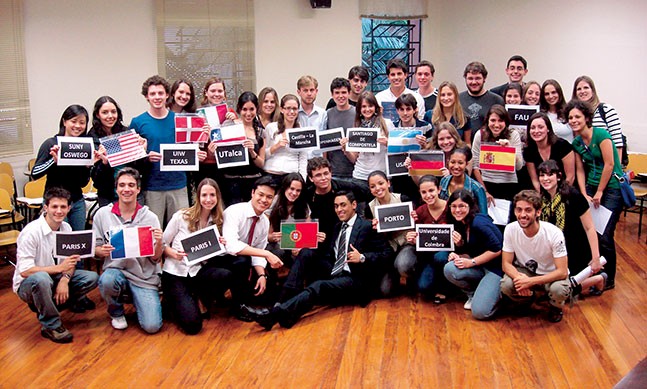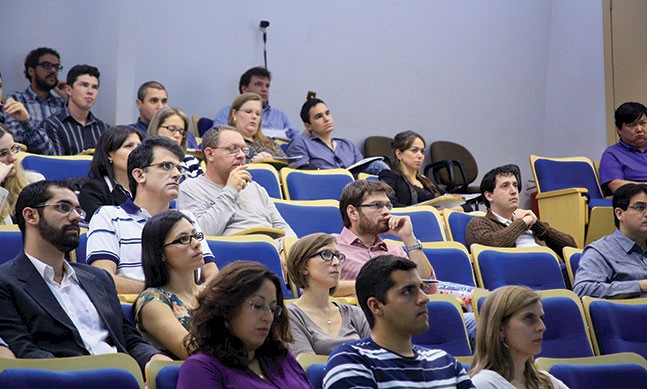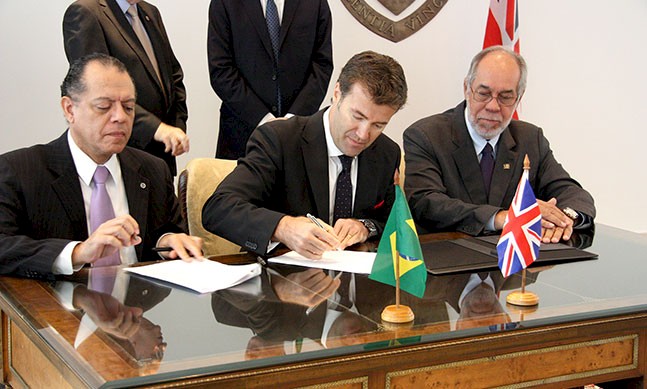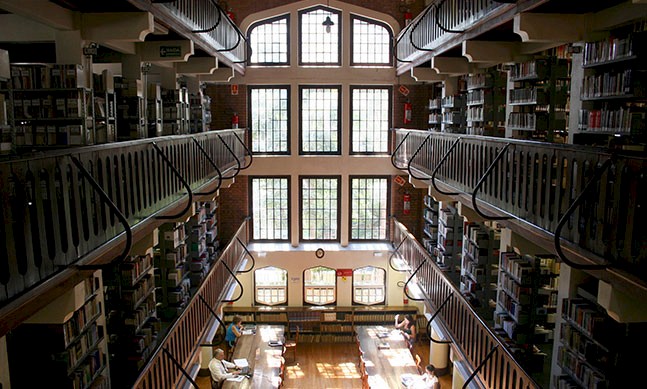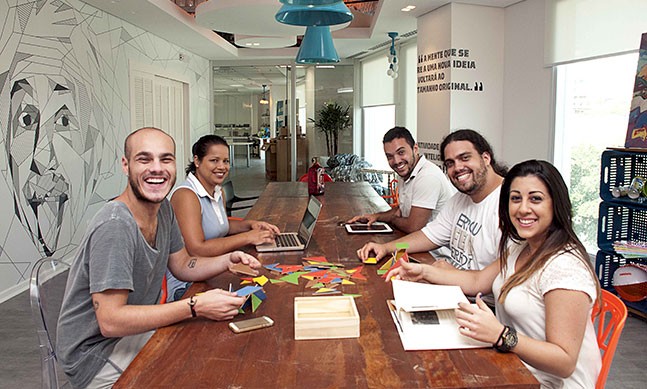The Sao Paulo Research Foundation (FAPESP) is at the forefront of the state’s push towards becoming a major global hub for science, technology and innovation, and the foundation’s president, Celso Lafer, could hardly be more qualified for the role. Twice Brazil’s foreign minister, the former minister for trade and industry and a representative for Brazil at the World Trade Organisation, Lafer has presided over the state’s research investment body since 2007, providing growing levels of financial backing that have driven the sector’s rapid development
The Report Company: Where does Brazil now stand on the world stage?
Celso Lafer: Brazil is a continent-sized country. [American diplomat George] Kennan called Brazil, along with the United States, Russia, China and India, a monster country because of its sheer size, weight and presence. I would say that we are a benign monster country, especially compared to the actions of the other four. Being located in South America, we have been removed from tension spots throughout history, and we have managed relations peacefully with our ten neighbours for over 130 years. This is a major asset. Peace is a threshold in international life, and Brazil has been much more successful at keeping it than the other so-called monster countries.
Ever since the 1920s, Brazil has been making the point that it has not only specific, but general interests in the functioning of the international system, and it has always demanded a voice in the international sphere. In this context, the multilateral scene has always been, for Brazil, a way through which the country could have that voice. For a country with more soft power than hard, this was a great opportunity. Multilateralism has never got in the way of Brazil’s bilateral relations. For Russia, China, India or the United States, the multilateral system is often a hindrance, but for Brazil, on the contrary, it has always been an opportunity to express itself and to introduce to the world its way of thinking and acting. The 1992 United Nations Conference on Environment and Development was one of the greatest multilateral moments of Brazilian diplomacy.
TRC: Where do you see the major opportunities for Brazil over the coming years?
CL: When you look at some of the macro tendencies in the international sphere, I think that the situation for Brazil is comfortable, if properly worked out. The emergence of a new middle-class, which is the result of an increase in income, has intensified the demand for energy. In this context, Brazil is in a reasonably comfortable position thanks to the country’s mix, particularly hydroelectricity and ethanol. We have great potential for wind, solar and biomass, too, all of which could be better harnessed. In short, if you analyse Brazil's situation and compare it to the rest of the world, our future seems good.
This worldwide increase in income also greatly intensifies the demand for agricultural products and primary products. The “decline in the terms of trade,” which [Argentinian economist] Raul Prebisch talked about in the 1950s, is not as important as it once was, because there is growing demand for commodities. Brazil produces very high-quality and greatly competitive agricultural products, and has abundant farmland.
Moreover, Brazil is a democracy, with all the benefits and challenges that entails, and one language predominates, despite our multi-ethnicity, something I consider to be an advantage in the international sphere.
I would have to say that I see a very positive scenario, as long as the country is able to use its assets well with a strategic view.
“If you analyse Brazil's situation and compare it to the rest of the world, our future seems good.”Tweet This
TRC: What role does FAPESP play in fomenting innovation in science and technology in Brazil?
CL: FAPESP is aligned with the Sao Paulo state government, and with Brazil as a whole, in the desire to create a link between high quality research, innovation and the competitiveness of the country.
It is worthwhile to describe the activities of FAPESP from the outset and first explain how the support for organised research in all fields of knowledge developed. FAPESP started out supporting relatively low-cost research projects, submitted by the researchers themselves, which would typically last two to three years. Subsequently, we moved on to more ambitious, thematic projects involving a greater number of professionals and researchers for five year periods. Finally, FAPESP moved on to the CEPIDs (research and development centres) which last eleven years. CEPIDs contemplate basic research and research with a view to application and they have a concern with innovation. There are several types of these centres, one of which is ‘new materials’, a new challenge that will affect productive processes.
Bearing in mind, however, that there is urgency in the theme of innovation and competitiveness, FAPESP also has PIPE (innovative research centre for small companies), focussed on small and mid-sized companies and those entrepreneurs who don't have sufficient funds themselves to do research. They come to us with ideas involving research and innovation, and we then provide the necessary resources to the company.
TRC: Are these resources repayable to FAPESP?
CL: These are grants and, therefore, completely non-repayable. We are betting – and every bet has a risk – on the innovative entrepreneurship of those that come to us with a project. In 2013, we approved on average two projects a week and more than 140 new projects across the whole year. The year before, we only approved 60. The maximum cost of each selected project is R$1.2 million, across two phases. We have been disseminating the program throughout the state and organising seminars to explain to potential clients how they should best present their project. It is important to remember that FAPESP reports to the state court of auditors, to the public prosecutor's office, so the projects need to meet their demands. These measures are often considered bureaucratic or excessively cumbersome, but there is no other way we can function as an institution. Obviously some of these companies work out and some don't, but in this respect we act as a business incubator.
TRC: In which sectors have you been concentrating your efforts and investments?
CL: PIPE could invest anywhere; there is no specific sector that we are more interested in. We also have the partnership for innovation, the so-called PITE, where the idea is to carry out research in cooperation with private companies. Usually, we are able to reach an understanding on what both parties are interested in researching and the funding is mostly split 50-50. It is a peer analysis approach and has included ambitious projects with, amongst others, Boeing, GlaxoSmithKline, Braskem in green polymers, Sabesp in water treatment and energy, and British Gas.
Half of the knowledge produced by Brazil is generated here in the state of Sao Paulo. Researchers from Sao Paulo can produce more than their counterparts in other states because Sao Paulo has such a dense research infrastructure: the three state universities (USP, UNESP and Unicamp), Unifesp, PUC and ITA, as well as other research institutes, which allows for greater efficiency. Sao Paulo spends 1.6 percent of its GDP in research, the same as some European countries.
TRC: A recent survey by Booz & Company suggested that Brazil is cutting investments in research and innovation. Do you agree that this is the case?
CL: I don't agree. Brazil is a big country with regional peculiarities. In the state of Sao Paulo, 60 percent of resources invested in research come from the private sector, which is unique in Brazil, and there are more state funds than federal funds. Here, the percentage of resources stemming from the private sector is equivalent to that of the developed world, but yes, if you look at Brazil as a whole, there is still a lot of work to do.
“FAPESP is aligned with the Sao Paulo state government, and with Brazil as a whole, in the desire to create a link between high quality research, innovation and the competitiveness of the country.”Tweet This
TRC: How can you stimulate the private sector to invest even more in innovation in times of slow growth?
CL: We have strong cooperation agreements with Microsoft, Boeing, Glaxo, British Petroleum and PSA Peugeot Citroen that are contributing to the expansion of private research in the state of Sao Paulo, but it’s a proactive search. It has been successful, because these companies have confirmed that there is an adequate level of knowledge for them to carry out their research projects. For FAPESP's internationalisation, of which this process is a part and the FAPESP Week in London is a great example of, we are using the principle of reciprocity; that is, both we and our partners need something to trade.
TRC: How would you appraise the bonds between the scientific community in Sao Paulo and the UK?
CL: FAPESP has a very dense, productive relationship with Great Britain including research councils with a number of universities including Imperial College and Birmingham University. Professor Sergio Gargioni is the president of the Brazilian National Council of State Research and Innovation Support Foundations and he expects this relationship to spill over to the others, which have no mechanisms for cooperation, and for the existing mechanisms to grow deeper. There are 14 ongoing cooperation agreements with British universities.
TRC: Are you witnessing greater links being formed between the two countries?
CL: The UK has been prioritising Brazil, and vice versa, particularly here in Sao Paulo. The relationship of the state of Sao Paulo with the UK is very intense and not only within the public sector but also private companies. I certainly can’t speak of the other states, but I think there is great interest elsewhere as well.
There is a lot of room for productive investments in Brazil, even though our infrastructure and logistics remain a challenge. When I asked a United States trade representative what the World Trade Organisation considered to be the essence of ‘power’, they said it was the size of the market. I would encourage investors to look at the size of our market early on in their decision-making process.
“There is a lot of room for productive investments in Brazil, even though our infrastructure and logistics remain a challenge.”Tweet This


